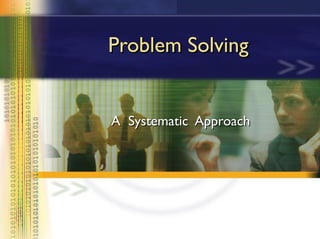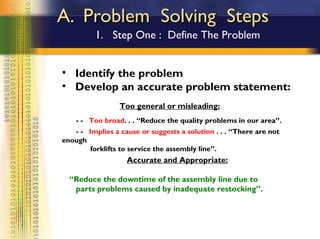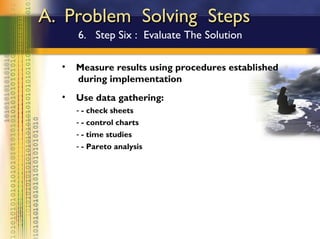The document describes a systematic 6-step approach to problem solving: 1) define the problem, 2) analyze the problem, 3) generate possible solutions, 4) select the best solution, 5) plan implementation, and 6) evaluate the solution. Key aspects of analysis include identifying root causes, collecting data, and using techniques like flow diagrams, cause-and-effect diagrams, Pareto charts, and check sheets. Alternative solutions are generated through brainstorming and selecting the optimal solution considers factors like safety, cost, and quality. Planning implementation and evaluating outcomes are also important steps in the process.




































